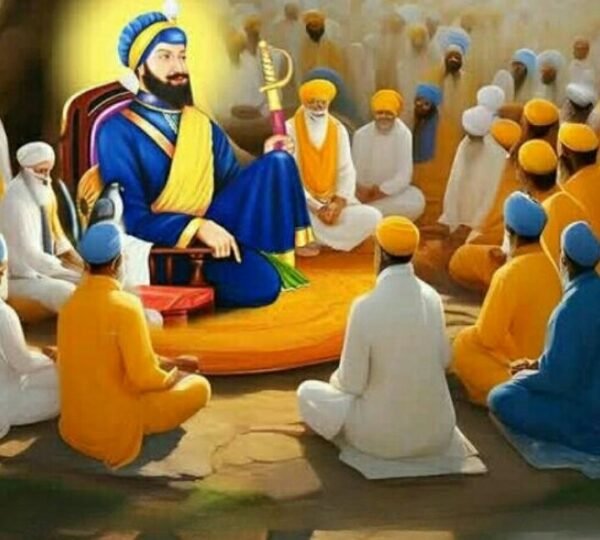Guru Hargobind Sahib Ji

Sixth Guru of Sikhism | The Saint-Soldier | Founder of Miri-Piri
Guru Hargobind Sahib Ji (born 19 June 1595, became Guru in 1606) was the sixth Sikh Guru and the only son of Guru Arjan Dev Ji, the first Sikh martyr. After his father’s brutal martyrdom, Guru Hargobind transformed Sikhism from a purely spiritual movement into a spiritual and temporal (political) force. He introduced the concept of the “Saint-Soldier” and laid the foundation of Sikh militarization.
 Early Life
Early Life
- Born: 19 June 1595, Guru Ki Wadali, near Amritsar, Punjab
- Father: Guru Arjan Dev Ji
- Mother: Mata Ganga Ji
- At age 11, following the martyrdom of his father, he was appointed as the sixth Guru.

 Martyrdom of Guru Arjan & Response
Martyrdom of Guru Arjan & Response
After the martyrdom of his father in 1606 under Mughal emperor Jahangir, Guru Hargobind changed the course of Sikh history:
- He refused to follow a path of silent suffering.
- He wore two swords to represent Miri (temporal power) and Piri (spiritual power).
- He built the Akal Takht (“Throne of the Timeless One”) across from Harmandir Sahib to signify sovereignty and justice.
- He started training Sikhs in martial arts, horse riding, and weaponry, preparing them to stand against oppression.
 Miri-Piri Concept
Miri-Piri Concept
Guru Hargobind was the first Sikh Guru to establish the duality of power:
- Miri
— Temporal authority (protecting righteousness and human rights)
- Piri
— Spiritual authority (upholding inner virtue and divine connection)
This made Sikhism not just a faith but also a resistance movement against tyranny.
 Militarization & Battles
Militarization & Battles
Guru Hargobind formed a small army and built a fort called Lohgarh. Though not aggressive, he fought defensive battles against Mughal forces:
- He fought four battles with the Mughal army but always emphasized self-defense, not conquest.
- He won all these battles, strengthening the Sikh community’s morale and identity.
 Imprisonment at Gwalior Fort
Imprisonment at Gwalior Fort
- Jahangir, fearing the Guru’s growing power, imprisoned him in Gwalior Fort in 1617.
- Guru Hargobind remained there for several years but continued to inspire and attract followers.
- Upon release, he refused to leave without 52 innocent Hindu kings (rajahs) who were also unjustly imprisoned.
- He had a cloak sewn with 52 tassels, each held by a prince—hence he was called “Bandi Chhor” (Liberator of Prisoners).
- His release is celebrated as Bandi Chhor Divas, which coincides with Diwali.
 Spiritual Work and Preaching
Spiritual Work and Preaching
- Though militarized, Guru Hargobind remained deeply spiritual.
- He encouraged kirtan, community service, and equality.
- He built several gurdwaras and spread Sikh teachings across Punjab and Kashmir.
 Family and Successor
Family and Successor
- Wife: Mata Damodari Ji
- Children: Guru Tegh Bahadur (ninth Guru), Baba Gurditta, and others
- He appointed his grandson Guru Har Rai Ji as the seventh Guru.
 Later Life and Death
Later Life and Death
- In his final years, Guru Hargobind moved to Kiratpur Sahib, located in the Shivalik hills.
- He passed away on 3 March 1644 at Kiratpur Sahib, leaving behind a brave and spiritually awakened Sikh community.
Legacy
Guru Hargobind Ji’s leadership marks a turning point in Sikh history:
- Transformed Sikhism into a spiritual and political force.
- Emphasized self-defense and justice over submission.
- Built the Akal Takht, which continues to be the seat of Sikh temporal authority.
- His model of the saint-soldier still defines Sikh identity.
 Famous Quote
Famous Quote
“Be fearless in the face of injustice, yet remain grounded in humility and truth.”
Thank you for the feedback! Here’s a moderately shortened version of Guru Har Rai Ji’s biography—written in heading and paragraph format, as you prefer, and with full context and flow

